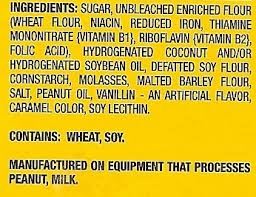Food Allergens

What does the legislation mean for consumers?
In December 2014, various food retailers started to put up notices about their policy with regard to allergens in the food that they served. This was due to Food Information Regulations (FIR) which meant that it was necessary to clearly state, in writing or verbally, whether any item on the menu contained certain allergens.
Not all allergens need to be highlighted but fourteen of the most common MUST be to comply with food allergen labeling requirements which came into force on 14th December 2014. Many establishments provide this information by way of a Customer Information File which patrons can request prior to ordering their meal. The information can be provided verbally but must be verifiable in writing in some way.
The Food Information for Consumers Regulation (EU) No.1169/2011 came into force on 13th December 2014 and apply to all food that is sold to the general public. Cafes, restaurants, hotels and even church halls must comply. It is no longer acceptable to state that foods may contain allergens, a definite answer is required. Information can be supplied verbally but the customer must be sign posted to written information.
Cereals containing gluten
| Wheat, spelt, rye, barley, oats
|
Molluscs
| Clams, shells, oysters, squid
|
Eggs
| |
Soya
| |
Fish
| |
Milk
| |
Peanuts
| |
Celery
| Including celeriac, often used in boullion
|
Nuts
| Almonds, cashews, Brazil, pecan, pistachio, macadamia, hazel nuts
|
Mustard
| |
Crustaceans
| Prawns, lobster, shrimp, crab, crayfish
|
Lupin
| Including seeds and flour. Found in some breads, pastries and pasta.
|
Sesame
| |
Sulphur dioxide
| When added at a level above 10mg per Kg. Often used as a preservative in dried fruits such as prunes and in wine.
|
Annex II of the EU Food Information for Consumers Regulation No.1169/2011 lists 14 food allergens that must always be labelled in pre-packed and non-prepacked foods. This came into force in the UK on 14th December 2014.

Labelling
An ingredients label MUST emphasise any allergenic ingredients from the above list. The style must be distinct from the rest of the ingredients list, for example using bold or italic type face. The food producer can decide how they do this but many do it in bold typeset.
It is acceptable for the ingredient to be in bold rather than the allergen, an example being RYE rather than GLUTEN. If several ingredients originate from a single allergen, this must be clear on the label too. In this case, milk powder, lactose and whey, all need to be listed separately and in the same distinct manner as other allergens on the label.
If a food is being sold by the name of an allergen, ie a box of eggs, no further advice is required that the product contains the allergen.

Customer Information
Food that is sold not pre-packaged must also conform to the rules. This applies to all catering establishments serving food. Cafes, restaurants, hotels, snack bars, mobile catering trailers and pubs, must all conform to the law. The information can be provided orally or verbally. If the information cannot be provided upfront, there must be clear downplaying as to where it can be obtained.
Many caterers are providing a customer information file. This should break down individual menu items and list allergens in each dish. Establish.nets can signpost customers to this file. It is very diligent to keep copies of ingredient labels in the file. Consumers then have the ability to make informed choices. It is important that these are kept up to date, especially if changes are made to recipes, suppliers of ingredients.
Menu item
| Ingredients
| Allergen
|
|---|---|---|
Bread and Butter Pudding
| Bread, butter, eggs, milk, vanilla, raisins,
| gluten, milk, eggs
|
This is a good format for allergy customer information folders. This must be available for customers. Ingredient labels should also be stored in the file.
Checklist for compliance
- Display notice advising customers that information regarding allergens in prepared dishes is available from a member of staff
- Make sure all dishes are prepared according to a standard recipe
- Keep Customer Information Folder up to date
- Check ingredients labels regularly for any changes
- Keep copies of labels in the Customer Information File
- Train staff to be able to answer questions regarding allergens
- Make sure information provided by staff is verifiable in writing
Further Reading
- Fact Sheet
- Resources for allergen information | Food Standards Agency
Guidance and materials to assist local authorities and food businesses in promoting, implementing and complying with the EU Food Information for Consumers Regulation, launched on 13 December 2014.

You don't have to give up your favourite foods
- Gluten Free Yorkshire Pudding
In Great Britain, Roast Beef is always served with Yorkshire Puddings and roasted potato. Yorkies are usually made with a plain, white flour batter, baked at a high temperature.
Cross Contamination
It is very important to ensure that foods are not contaminated by allergens due to careless preparation, storage or cooking procedures. Ideally a separate part of the kitchen should be used solely for the preparation of foods that are being prepared for those at risk. Using a separate board, knife and toaster is absolutely essential for preparing gluten free sandwiches and toast.
During storage, foods should be kept in sealed containers, preferably in their original packaging for easy access to the ingredients label. Follow common sense steps such as wearing protective gloves and aprons when handling food and consider preparing foods for allergen diets first and storing appropriately until needed.






